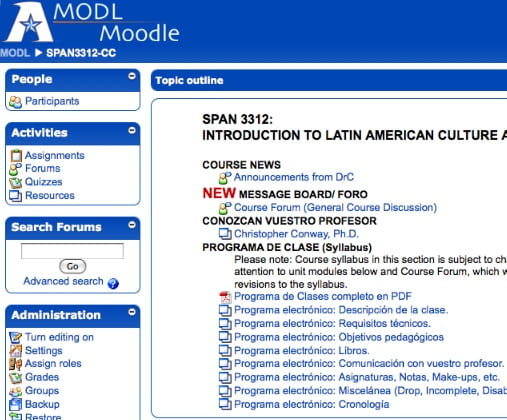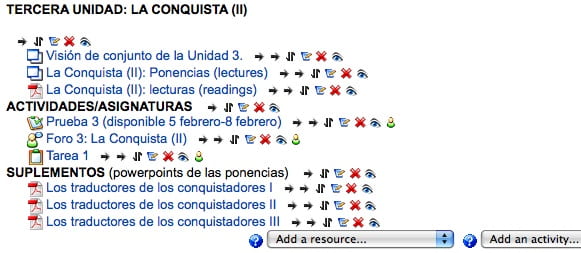I think we can agree that live classes are not mirrors of web classes, or vice versa. But there are some fundamentals that transcend the medium in which a class is taught. On the positive side, engaged professors make a difference, whether it be in a live class or a web class. Also, unleashing student’s creativity rather than squashing it makes a big difference in class morale, regardless of the class being online or live. I won’t list the lousy things in course design and instruction that plague live and web classes equally. We can leave that for another day.
I just had a great experience in my web class that I’d like to share.
The students in my web class have been emoting a lot lately in the message boards because they have been learning about the Dirty War in Argentina in the 1970’s, in which some thirty thousand people were disappeared (detained, tortured and murdered, without having their bodies returned). Students have been surprised to learn about this episode in Argentine history, and have responded very emotionally, with sadness, and [justified] self-righteous anger. How can this have happened? Why is it we never knew about it? Why is it more people don’t know about this? These are the questions that keep on coming up on the message board.
One student, however, has offered a dissenting voice on the message board. She intervened to say that while she shares people outrage and sadness, she is concerned about the fact that no one is talking about how, in recent years, the U.S. has ‘illegally’ detained people suspected of terrorism and even exported them to CIA “Black Sites” where they are interrogated with “enhanced” techniques (often a euphemism for torture.) Rather than bemoan the past, asks the student, why not engage with the problems of the present?
It’s pretty provocative, and it’s pretty brave. They say that “teaching the controversy” is always a good technique for fostering engagement. But what’s making me happy today is that it was a student who is trying to teach the controversy. Regardless of where you fall on the issue of the detention of terror suspects and the issues surrounding the War on Terror, this is a debate worth having. The generals responsible for the Dirty War in Argentina committed their crimes in the name of the fight against Communism, at the height of the Cold War. Is it possible to compare this to the U.S. Government’s extreme and unorthodox measures to combat terrorism? At its bluntest, do the ends justify the means? It will be interesting to see if students reply and how. As I said, there’s no single answer to this question, but there are different positions to be articulated, defended and argued.
I’ll come back and keep you posted.



